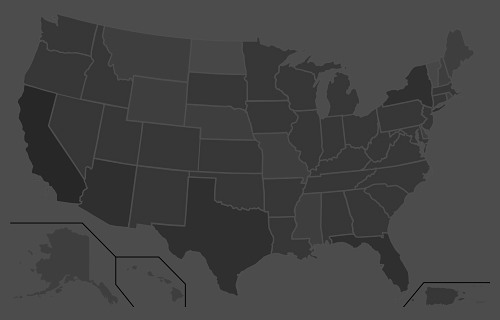“Our added winter moisture and active calling period led to a very long nesting and hatching season, starting in late April and extending into early summer, with chicks hatching as late as early July,” O’Dell said. “From a population standpoint, we are out of a deficit for the first time since 2001-2002. Quail are starting to pop up in places they haven’t been seen in a while.
“If you’ve never had the chance to experience what Arizona quail hunting built its name on, then this would be the year to get out and enjoy it.”
Meanwhile, hunters should note that the season for Mearns’ quail doesn’t begin until Dec. 4. It’s summer rainfall that plays a key role in nesting success and population numbers of this species. After a spotty and relatively weak monsoon across southern Arizona, these birds are likely to be abundant only in pockets that received sufficient precipitation this summer.
A valid Arizona hunting or combination hunt and fish license is required for all hunters 10 and older. Those hunters under 10 must either have a valid hunting or combination hunt and fish license, or be accompanied by an adult who possesses a valid hunting or combination hunt and fish license. Licenses can be purchased online or at license dealers statewide. A youth combination hunt and fish license (ages 10 to 17) is $5.
The general bag limit is 15 quail per day in the aggregate, of which no more than eight may be Mearns’ quail (when the Mearns’ season opens Dec. 4). The general possession limit is 45 quail in the aggregate after opening day, of which no more than 15 Gambel’s, scaled or California quail in the aggregate may be taken in any one day. After the opening of the Mearns’ season, the 45-quail possession limit may include 24 Mearns’ quail, of which no more than eight may be taken in any one day.
More quail-hunting information can be found on the department’s website at https://www.azgfd.com/Hunting/. Another resource for both new and experienced hunters alike is “An Introduction to Hunting Arizona’s Small Game.” Written by Randall D. Babb, the 196-page, full-color book covers where and how to hunt small game birds (like quail), squirrels, rabbits, ducks and geese. It also includes how to prepare and cook your harvest, with illustrations and recipes. The book can be ordered for $16.95 at www.azgfd.gov/publications.
Finally, hunters should check out O’Dell’s techniques for field-dressing quail at https://www.youtube.com/watch?v=3gRwZAcWzzk.
####
Publishers Notes: OUT OF STATE HUNTERS, FISHERMEN & OUTDOOR ENTHUSIASTS; Due to the Covid 19 pandemic, there could be limitations for OUT of STATE hunters, fishermen and other outdoor enthusiasts to include a 14-day quarantine requirement or negative COVID-19 testing alternative. Please check with the State's Department of Natural Resources BEFORE you travel or apply for the 2020 Fall Hunts.
Disclaimer: The views expressed on this site are that of the authors and not necessarily that of TBC Press
The First of Iowa’s Three Duck Hunting Zones Opened Oct 2
Submitted by: TBC Press
Posted on: 10/04/21
The Backcountry Press
The country's premier daily HUNTING, FISHING & OUTDOOR news in the USA and around the globe. Read whats happening in your neck of the woods & beyond.
© 2020 TBC Press - All Rights Reserved Website Design by:
News # 14558
Wetland conditions has improved for the Oct. 2 opening day of Iowa’s duck season in the north zone. The most recent migration report shows an increase in the number of ducks that pushed in to Iowa, thanks to a classic September weather change.
“The migrating birds are just beginning to arrive and we’re seeing a modest increase in number of ducks across the state,” said Orrin Jones, state waterfowl biologist for the Iowa Department of Natural Resources. “Our molt migrating geese are also coming back so things are looking really good.”
Iowa offers hunters the opportunity to hunt in three different waterfowl hunting zones – north zone, central zone and south zone – and those zone boundaries are new this year.
“We made some significant changes to our zones so hunters will want to familiarize themselves with the new boundaries and then confirm the season dates for their hunting location,” Jones said.
Iowa’s duck hunters can expect to see good numbers of ducks this fall, but fewer young ducks will be part of the migration.
“Most of the breeding areas across the Continental US experienced a significant drought this spring and that resulted in fewer hatched birds. We also saw the lowest gosling production since 2013,” Jones said.
While the wetlands have improved since the teal season, Jones encourages hunters to scout to see the water conditions and duck use.
“We’re right in the changing of the season and with the new ducks arriving and the change in the wetlands condition, I would encourage the hunters to get out there and put eyes on it before the season begins,” he said.
Iowa Waterfowl seasons
North Zone
- Ducks, Mergansers, Coots: Oct. 2-8 and Oct. 16-Dec. 7
- Geese: Sept 25-Oct. 10; Oct. 16-Dec. 7; Dec. 11-Jan. 8, 2022
Central Zone
- Ducks, Mergansers, Coots: Oct. 9-15 and Oct. 23-Dec. 14
- Geese: Oct. 2-17; Oct. 23-Dec. 14; Dec. 18-Jan. 15, 2022
South Zone
- Ducks, Mergansers, Coots: Oct. 16-22 and Oct. 30-Dec. 21
- Geese: Oct. 9-24; Oct. 30-Dec. 21; Dec. 25-Jan. 22, 2022
New zone boundaries established for the 2021 season
New waterfowl hunting zone boundaries have been implemented for the 2021 waterfowl hunting season and it is important that hunters carefully review the zone boundaries and season dates relative to their intended hunting location. The new boundaries may change which zone certain locations fall within. For example, Green Island WMA in Jackson county was historically included in the North Zone, but will now be in the Central Zone. Season dates differ between zones.
For the fall 2021 through spring 2026 seasons, the North Zone is that part of Iowa north of a line beginning on the South Dakota-Iowa border at Interstate 29, southeast along Interstate 29 to State Highway 20 to the Iowa-Illinois border. The South Zone is that part of Iowa west of Interstate 29 and south of State Highway 92 east to the Iowa-Illinois border. The Central Zone is the remainder of the state.
DNR advising hunters to look for a change in HIP registration **Next Year**
Beginning Dec. 15, 2021, when the 2022 hunting licenses go on sale, all hunters who pursue migratory game birds will be required to register for HIP either through the Go Outdoors Iowa app on their smartphone, through a link at www.iowadnr.gov/waterfowl or at www.gooutdoorsiowa.com. Migratory game birds mean more than ducks and geese; in Iowa it includes ducks, geese, coots, doves, woodcock, rails, and snipe.
Once registered, hunters will need to write a confirmation number on their license, print an updated copy of their license with the confirmation or take a screenshot of their confirmation on their phone to show proof of registration. Requiring a confirmation number will allow the DNR to better track migratory bird hunters – a federal requirement.
The change was necessitated because registering through license vendors at the time of purchase has been inconsistent.
####












